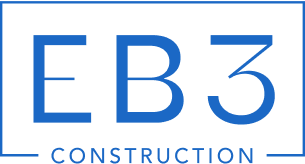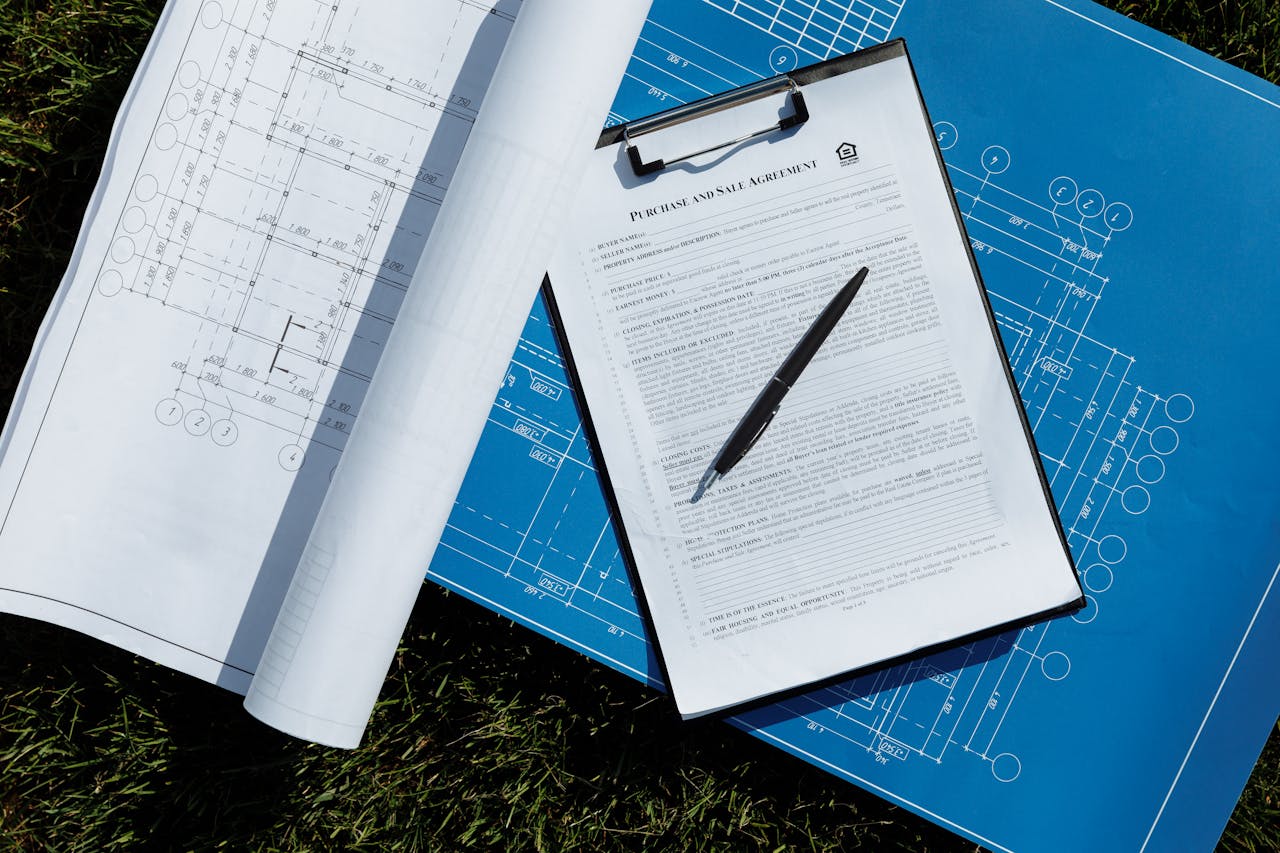When earthquakes damaged thousands of California buildings in 1994, property owners discovered that structural upgrades could mean the difference between safety and catastrophe. A structural retrofit general contractor specializes in strengthening existing buildings to meet current safety standards and resist natural disasters.
We plan, coordinate, and execute structural modifications that extend building life and protect occupants. Our work encompasses seismic strengthening, foundation repair, drainage improvements, and comprehensive structural upgrades across diverse facility types.
Which Building Types And Markets Are Commonly Retrofitted?

Retrofit work crosses multiple sectors, each with distinct structural demands. Commercial and public facilities drive significant retrofit activity due to aging infrastructure and evolving building standards.
Commercial properties lead retrofit demand across several categories. Offices require updates for energy efficiency, seismic compliance, and modern building systems. Multifamily residential buildings often need structural strengthening and building envelope improvements. Hospitality facilities pursue retrofits to maintain competitive standards while addressing safety requirements. Parking structures face unique challenges with concrete deterioration and seismic vulnerabilities that demand specialized solutions.
Industrial facilities represent a substantial retrofit market with complex requirements. Chemical processing plants, refineries, and manufacturing sites need upgrades that maintain operational continuity. Pulp and paper facilities, food and beverage processors, and pharmaceutical plants require retrofits that meet strict regulatory standards while minimizing production disruption.
Power generation infrastructure undergoes extensive retrofit work to extend service life and improve efficiency. Fossil fuel plants, nuclear facilities, and hydroelectric systems require structural upgrades to meet current standards. Renewable energy installations and transmission systems also need periodic strengthening and modernization. These projects often involve specialized foundation work and equipment mounting systems.
Water and wastewater infrastructure creates steady retrofit demand across urban and rural areas. Treatment facilities require updates to processing equipment foundations and structural systems. Pipelines need support structure improvements and corrosion protection. Storage tanks and combined sewer overflow (CSO) structures undergo retrofits to prevent environmental issues and ensure long-term functionality.
Transportation infrastructure generates large-scale retrofit projects with public safety implications. Bridges require seismic retrofitting and structural strengthening to handle increased traffic loads. Tunnels need ventilation system upgrades and structural improvements. Railway infrastructure, airports, and port facilities undergo retrofits to accommodate modern equipment and safety standards. Locks and dams represent specialized projects requiring unique engineering approaches and coordination with multiple agencies.
What Services And Techniques Are Used In Structural Retrofits?
Structural retrofit work encompasses a comprehensive range of specialized services designed to upgrade and strengthen existing buildings. We handle structural upgrade and seismic retrofit projects that enhance a building’s resistance to lateral forces and ground motion. Concrete repair addresses deterioration through targeted restoration methods.
Primary Structural Services
Our core service portfolio includes moisture control and waterproofing systems that protect structures from water infiltration and environmental damage. Corrosion control treatments extend the service life of reinforced concrete and steel elements by preventing further deterioration. We also perform structural strengthening work that increases load-carrying capacity without major reconstruction.
Equipment foundations require specialized attention during retrofit projects. We design and install new foundation systems or upgrade existing ones to support mechanical equipment and operational changes. Post-tensioning repair involves restoring or replacing damaged tendons in prestressed concrete structures.
Specialized Protection And Restoration Work
Building envelope restoration addresses the exterior shell of structures through comprehensive facade work. This includes precast panel repair, curtain wall system upgrades, and weatherproofing improvements. We handle repointing work on masonry surfaces and perform leak investigation services to identify moisture intrusion points.
Historic restoration projects require careful attention to preserving architectural character while meeting modern performance standards. Force protection upgrades strengthen buildings against blast loads and security threats. Fireproofing applications protect structural steel and concrete elements from high-temperature exposure.
Construction Techniques And Methods
Field application techniques vary based on structural conditions and project requirements. Epoxy sealing fills cracks and voids in concrete surfaces to restore structural integrity. We use stitching methods to repair larger concrete sections and routing and sealing for active crack repair.
Overlay systems provide new wearing surfaces and additional structural capacity. Grouting techniques fill voids and strengthen connections between structural elements. External stressing methods apply post-tensioning forces to increase structural capacity without major demolition work.
Advanced repair methods include blanketing techniques for corrosion protection and autogenous healing systems that allow concrete to self-repair minor cracks over time. Coatings and linings protect surfaces from chemical exposure and environmental conditions.
How Is A Retrofit Project Planned, Sequenced, And Kept Safe?

We coordinate with project teams early to establish scheduling frameworks that account for operational constraints and site-specific challenges. Hours of operation get defined upfront to minimize interference with existing building functions. Traffic control planning addresses access routes, material deliveries, and equipment staging areas.
Our investigate–design–build approach starts with thorough root cause investigation to identify structural deficiencies and performance gaps. We examine existing conditions, review original drawings when available, and conduct field assessments to understand what needs attention. This investigation phase prevents costly surprises during construction and ensures solutions address underlying issues rather than just symptoms.
Design Development And Constructability Analysis
Design development follows investigation findings with engineered solutions tailored to each structure’s specific needs. We work with structural engineers to develop retrofit strategies that integrate seamlessly with existing systems. Constructability analysis evaluates access limitations, material handling requirements, and sequencing constraints that could impact project delivery.
Turnkey solutions emerge from this collaborative design process. We coordinate mechanical, electrical, and specialty trades early to identify conflicts and optimize installation sequences. This integrated approach reduces change orders and keeps projects moving forward on schedule.
Project Sequencing To Minimize Disruption
Work sequencing balances construction efficiency with operational continuity. We prioritize critical path activities while maintaining building functionality where possible. Phased construction approaches allow portions of structures to remain operational during retrofit work.
Tight timeframes require careful coordination of trade activities and material deliveries. We sequence work to avoid conflicts between concurrent operations and maintain safe working conditions throughout the project. Site conditions often present unique challenges that require adaptive sequencing strategies.
Safety Planning And Implementation
Safety planning begins during project development and continues throughout construction. We establish jobwide safety protocols that emphasize prevention and accountability. Site-specific safety plans address hazards unique to retrofit environments, including working around occupied spaces and existing utilities.
Noise and dust control measures protect both workers and building occupants. We implement containment systems, schedule noisy activities during appropriate hours, and coordinate with facility managers to minimize impacts on sensitive operations. Construction work in occupied buildings requires significant experience and care to minimize tenant disruption while ensuring safety and technical precision.
Continuous safety monitoring ensures protocols remain effective as work progresses. Daily safety meetings address changing conditions and reinforce accountability standards. This systematic approach to safety planning protects everyone on site while maintaining project momentum.
Why Consider Seismic Retrofitting And What Incentives Exist?
Seismic retrofitting improves the structural integrity of buildings, reducing the risk of collapse and minimizing the potential for injury or loss of life during earthquakes. The enhanced safety provides direct occupant protection when seismic events occur.
Property owners often find that retrofitted buildings become more attractive to buyers. The investment in seismic upgrades can enhance property value by demonstrating proactive risk management and structural improvements.
Financial Risk Reduction
Earthquake insurance deductibles can represent significant financial exposure for property owners. These deductibles often range from 10% to 25% of a building’s replacement cost, creating substantial out-of-pocket expenses after seismic damage.
Retrofitting helps reduce this risk exposure by strengthening structures against earthquake damage. The upfront investment in seismic improvements can prevent much larger repair costs and insurance claims later.
Available Incentive Programs
The Earthquake Brace + Bolt (EBB) program provides eligible California homeowners up to $3,000 in reimbursement toward residential code-compliant seismic retrofit costs. This state-funded incentive program helps offset retrofit expenses for qualifying properties.
The program specifically targets wood-framed homes built before 1980 with raised foundations in select high-risk ZIP codes. Income-eligible homeowners may also qualify for supplemental grants that can cover up to 100% of retrofit costs when combined with the standard EBB reimbursement.
Conclusion And Next Steps

A structural retrofit general contractor coordinates design, planning, safety, and field work across many facility types. We deliver seismic strengthening, foundation work, building envelope repairs, and specialized upgrades through our investigate–design–build approach. This integrated method examines root causes, develops engineered solutions, and ensures turnkey delivery that meets tight schedules and demanding site conditions.
Next steps begin with defining your retrofit goals and documenting existing conditions. Plan early constructability and sequencing with your project team to minimize disruption during construction. Explore available incentives like the Earthquake Brace & Bolt program, which provides up to $3,000 in reimbursement for qualified properties. These financial programs can significantly offset project costs while improving structural resilience.
Ready to strengthen your property? Contact EB3 Construction to discuss your structural retrofit needs.




